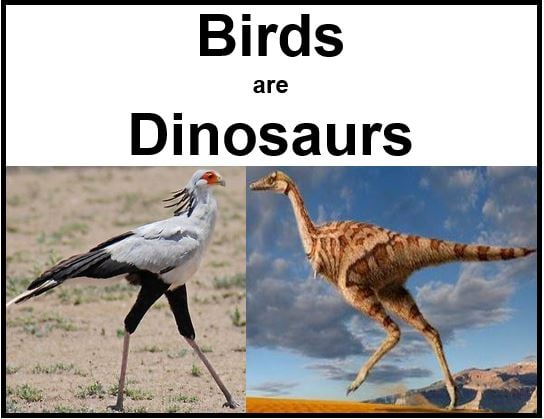A bird ‘family tree’, said to be the most detailed ever made, using genetic data from 48 different species, traces how modern birds evolved and thrived after dinosaurs became extinct.
The international study, carried out by more than 200 scientists from twenty nations, gives us a better understanding of the evolutionary relationships of different bird groups today, and explains how certain traits evolved, such as color vision, colorful feathers, toothlessness and singing.
The researchers analyzed the genomes of three species that had already been sequenced, and decoded those of another 45 types of birds, ensuring virtually all current bird groups were covered.
The species included crows, cranes, pelicans, vultures, loons, finches, ostriches, turkeys, swifts, flamingos, owls, chickens, ducks, pigeons, woodpeckers, eagles, falcons, hummingbirds, cormorants, hornbills, and penguins.
Most of the evolution occurred post-dinosaur
The scientists found that nearly all modern birds diversified after the extinction of the dinosaurs 66 million years ago.
Associate Professor Simon Ho, from the University of Sydney, Australia, who led part of the study looking at evolutionary timescale, said:
“The popular view until now has been that the extraordinary diversity of birds began during the dinosaur age but we found little support for this.”
The Avian Phylogenomics Consortium’s work over four years has brought together more than 200 scientists to better understand the evolution of birds. (Photo: Eurekalert)
Professor Ho’s component of the study helped confirm that some of the first lineages of modern birds emerged about 100 million years ago. However, he and his team also found that most modern bird groups diversified in a small window of less than 10 million years, shortly after an asteroid wiped out the dinosaurs.
Professor Ho said:
“Our team had to develop a range of new methods to handle the largest bird data set ever assembled. These required the equivalent of more than 400 years of computing power across nine supercomputers. The team was able to work out the relationships among the major groups of modern birds, showing that our previous understanding of birds had been clouded by the appearance of similar traits and habits in distantly related groups.”
“So while grebes and cormorants are both waterbirds with webbed feet that dive to catch their prey they are, despite these similarities, from completely distinct lineages.”
Professor Ed Braun, from the University of Florida, who was also involved in the study, explained that birds are dinosaurs; in fact, the one lineage of dinosaurs that survived the mass extinction.
The team also found that the ancestor of the majority of today’s land birds was probably an apex predator that gave rise to falcons, owls, and eagles in rapid succession before leading to land birds such as woodpeckers and songbirds.
After the dinosaurs were gone, mammals and birds were able to become more diverse and occupy all the areas that the dinosaurs had previously dominated.
Prof. Ho added:
“This was one of the most significant episodes in the history of life on earth and it is tremendously exciting that this major scientific international effort has made these advances in our understanding.”
“Special free section: The avian genome,” Science, December 12, 2014.
Video – 48 species of birds
This Duke University video lists the 48 species of birds in the study.


